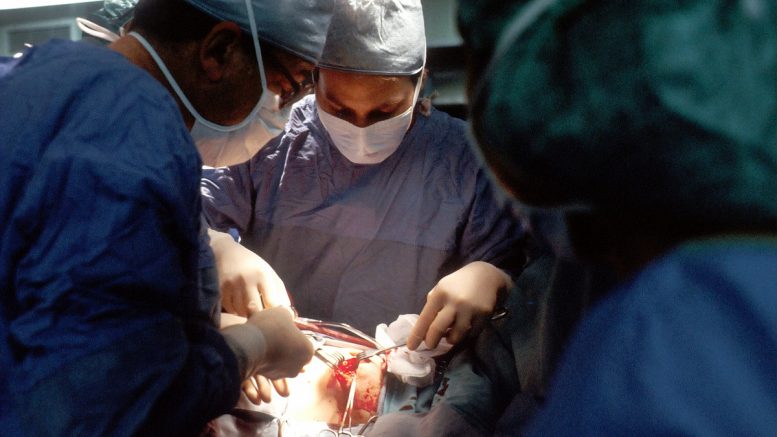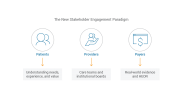The last few weeks have been filled with the news of at least three effective vaccines that could be available to combat Covid-19 by the end of 2020. Meaning that with Herculean mass vaccination programmes commencing in early 2021, we could have the world almost back to normal by the spring. But we still have the worst part of the winter to come and enormous healthcare backlogs and pent up demand waiting within our populations that will need dealing with for the rest of 2021.
Uncomfortable reading
Where we are now does not make comfortable reading or point to a benign winter. In the Nuffield Trust’s NHS Performance Summary September to October 2020, there are some portents of a bumpy winter season ahead.
In October 2020, total ED attendances were 1.6 m; a fall of 26% in comparison to the same period in 2019. But, there has been a rise in ambulance incidents (which is notably the reports of when patients have arrived at an ED department but have had to remain on the ambulance due to issues such as no bay availability and staffing in the ED). Moreover, despite the declining numbers of patients attending ED, the 4-hour wait time for patients is almost the same as this period in October 2019 and for the last five months 4-hour performance overall has been deteriorating. Worryingly, numbers of patients waiting greater than 12 hours on a trolley in ED is 75% higher than in the same period in October 2019.
For planned care the news is no better – despite a ramping up of services over the summer of 2020, 4.4 million patients are currently waiting to begin consultant led care, in comparison to April 2020 when the waiting list stood at 4.5 million patients. There are growing waits for all manner of diagnostic tests and procedures, and cancer waits continue to be challenged.
Performance on discharge is also showing signs of strain this Autumn – with increasing numbers of patients who are medically fit but still occupying hospital beds. This despite £280m funding being provided to accelerate ‘discharge to assess’ by paying for the first six-weeks of out-of-hospital care.
Good reason to where we are now
There are solid and obvious reasons for the current state of performance: the needs for the streaming of patients into covid and non-covid pathways both at admission and those needing on-going care at discharge. The operational impact of the current second wave of Covid on health services. Indeed, an interesting piece in the HSJ showed that once the number of Covid patients admitted to a hospital hits 15% of total admissions, the provision of planned services is impacted, compounding efforts to recover performance.
But the NHS is resilient and has become skilled at managing services and capacity considering the operational impact of social distancing, planning and time lost due to infection control and prevention (donning, doffing and longer cleaning protocols). Plus, managing the massive impact of covid on the workforce, including staff testing and staff away due to having to self-isolate.
However, my reflection is all the challenges listed above are all the signs and symptoms of challenged patient flow.
Back to Basics
In the early noughties, I was a joint head nurse of a regional Critical Care Network and as part of this spent a lot of time being tooled up by the then NHS Modernisation Agency (Proto NHS Improvement) to help change healthcare.
As part of my time working with the Network, I was exposed to all manner of ‘then’ cutting edge thinking on operational management, improvement tools and change techniques. From Understanding Capacity and Demand; the theory of constraints; system thinking and system management – it was here I discovered a new hero, W. Edwards Deming and his TQM approach and the shear madness of the ‘red-beads’ process.
As I look at the numbers and data coming out of NHS England on current performance, three things jump out from my time back in 2003: bottlenecks, ‘carve out’, and variation. In attacking Covid we have created whole new sets of bottlenecks, carve out and added new causes for variation.
First: what are bottlenecks, carve out and variation?
Bottlenecks – A bottleneck is where queue forms and slows down a process. There are two types of bottleneck: the process bottleneck which limits the rate of the process, i.e. the step that takes a significant amount of time – like a covid test taking 2 to 8 hours from swab to result, or that to deep-clean a bed post a Covid-patient discharge takes >2 hours.
Or the functional bottleneck, which occurs when a resource is used by more than one process, e.g. ED porters who move patients around the ED department and take patients to the wards. Or an MRI scanner being used for emergency and planned patients.
Carve Out – Capacity that is retained for a particular type of patient or test (e.g. beds set aside for Covid positive patients and non-Covid cases.) Carve out will cause queues as beds can go unused or are misused which leads to increased variation. The flow of one group of patients is improved at one bottleneck to the detriment of others.
Variation – There are two types of variation – natural (common cause) and artificial (special cause). Common cause can be discharge variation (no weekend discharges, discharges late in the day) impacting the admission on a downstream service; staff absence due to Covid; and availability of staff and patient testing. It can also be the time it takes between a bed being declared available, cleaned, and ready to be occupied by a patient waiting. Examples of special cause variation include a broken-down piece of equipment or sudden illness.
In short, by being able to identify and see your ‘Bottlenecks, Carve Out and Variation’ – you can then in turn measure the impact and take operational action to reduce their impact. To create, improve and maintain flow.
Making Winter better
There is some hope that winter 2020/2021 might not as be as bad for healthcare as forecast, especially if we follow the same trend as the Southern Hemisphere and have an almost non-existent ‘flu season’.
But, we will need more than that this winter and, in truth, for the whole of 2021. All in all, our approaches to managing patient flow have remained unchanged for too long and new processes to manage Covid-19 have worsened capacity availability.
Despite the recognised wisdom of W. Edwards Deming’s theories, his ideas have not been widely embraced and relying on change management is no longer quick enough under the current circumstances.
We need to adopt more blended approaches from a rapid uptake of IT and know-how now. There are IT platforms out there that already lock-in capabilities and functionality that help NHS organisations ‘see’ their operational bottlenecks in real-time to reduce delays and make length of stay more predictable.
There are systems that remove carve out so organisations can reduce lost capacity and increase productivity of their current resources. Systems that mean organisations do not have to wait months for analysts to give them data on the common variation in their process but see it in real-time.
We also need to embrace bringing the real-time data together in a single tactical and operational environment to give the control needed to make operational changes in the moment based on the current situation.
The New Hope
Post spring 2021 the old healthcare challenges we faced prior to the pandemic will come back into the headlines with a vengeance, such as the looming staffing crisis. It will only be by enabling fundamental process changes by embracing methodologies such as real-time patient flow, that we will have the best chance of making things better.
Article by Stephen Boyle, TeleTracking UK





